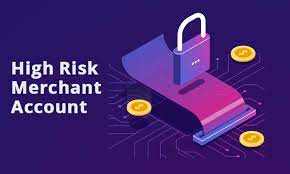A high-risk merchant account is a type of account that allows businesses to process credit and debit card payments, even if they are considered to be high risk. High-risk businesses are those that are more likely to experience chargebacks or fraud, or that are in industries that are commonly associated with high levels of risk.
Chargebacks happen when a customer disputes a charge on their credit or debit card statement. This can be due to fraud, dissatisfaction with the product or service, or even simple mistakes. When a chargeback occurs, the merchant is responsible for repaying the amount of the purchase to the issuing bank, as well as a fee. This can be a significant financial burden for merchants, especially if chargebacks happen frequently.
Fraud can occur when someone uses a stolen or counterfeit credit or debit card to make a purchase, or when they use a fake ID to do so. It can also happen when someone makes an unauthorized online purchase with another person’s card. Whatever the case, fraud can be costly for merchants, as they are responsible for repaying the fraudulent charges to the issuing bank, as well as fees.
There are a number of industries that are commonly considered to be high risk. These include businesses that sell products or services that are often associated with chargebacks or fraud, such as electronic cigarettes, online gambling, and dating services. Other high-risk industries include those that are considered to be higher risk due to the nature of their products or services, such as jewelers and gun shops.
How do high-risk merchant accounts work?
High-risk merchant accounts work in much the same way as regular merchant accounts. Businesses that are considered to be high risk will typically have to pay higher fees than those that are not, but they will still be able to process credit and debit card payments.
When you apply for a high-risk merchant account, the processor will take a number of factors into consideration. This includes your industry, your processing history, and the average amount of your transactions. Based on this information, the processor will give you a risk rating, which will determine the fees that you will be charged.
What are the benefits of a high-risk merchant account?
There are a number of benefits that come with having a high-risk merchant account. First, it allows you to process credit and debit card payments, even if you are considered to be high risk. This can be a valuable service for businesses that may have trouble getting approved for a regular merchant account.
Second, high-risk merchant accounts typically come with higher fees than regular accounts. This may seem like a downside, but it actually provides some protection for the processor in the event of chargebacks or fraud. The higher fees help to offset the risk that the processor is taking on by approving these businesses.
Third, high-risk merchant accounts can provide you with access to features that may not be available with a regular account. This includes chargeback protection and fraud prevention services. These features can help to protect your business from the financial losses that can occur as a result of chargebacks or fraud.




